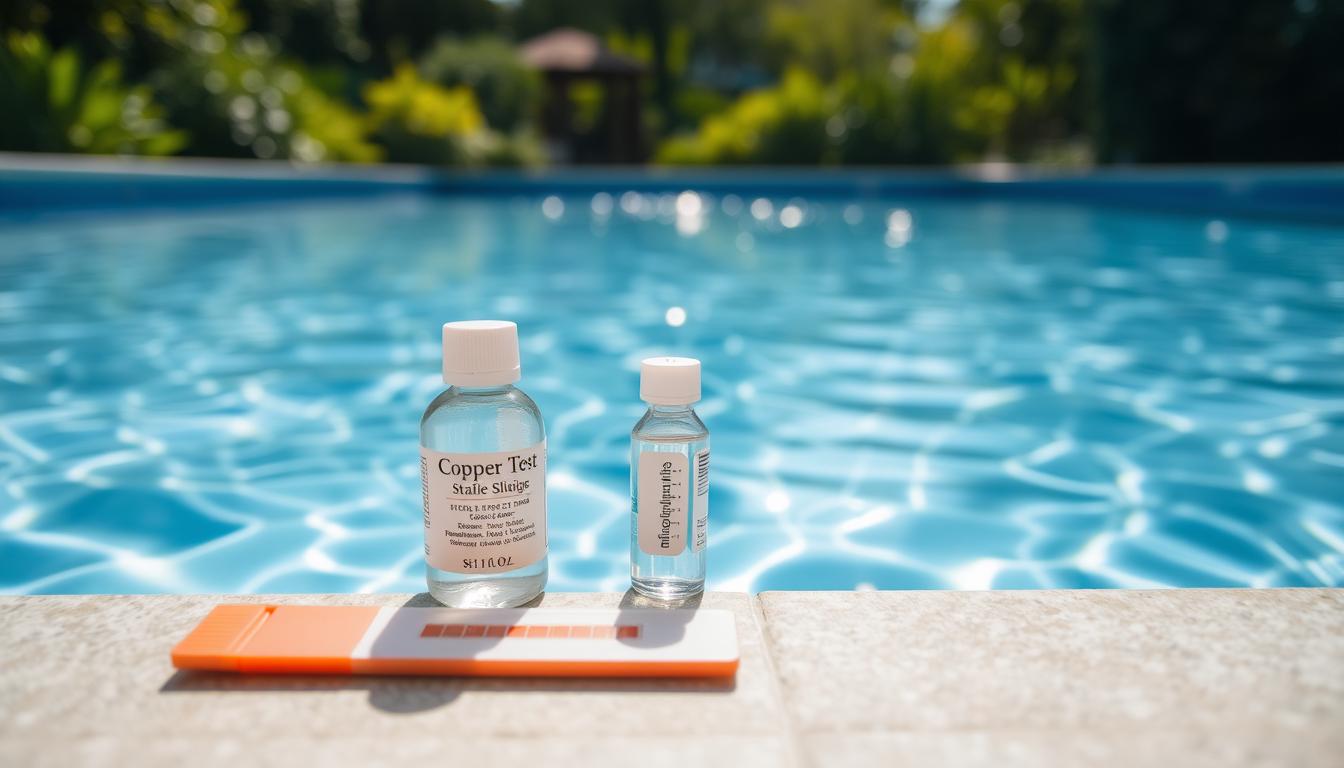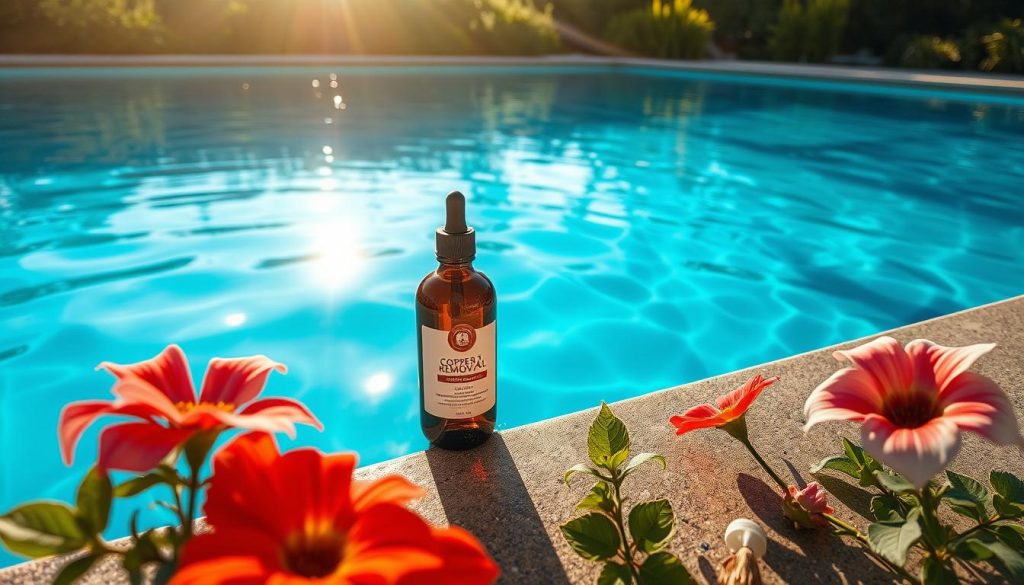
Acceptable copper pool levels should be below 0.2 ppm. This low level can still stain pool surfaces and turn blonde hair green. Let’s explore how to lower copper levels in pool water.
Copper enters pool water from many sources. These include well water, municipal water, rainwater, and pool chemicals. Equipment and structural components can also contribute to copper levels.
When copper mixes with other chemicals, it forms precipitates. These attach to pool walls and create stains. Proper pool copper treatment methods are crucial to prevent this issue.
We’ll explore copper in your pool, its sources, and effects of high levels. You’ll learn expert tips for effective copper removal pool treatments. These include testing for copper and using chelating agents.
Maintaining proper pool water chemistry is key. Follow these guidelines to reduce copper pool levels. Your pool will stay pristine all season long.
Understanding Copper in Your Pool
Copper plays a vital role in pool maintenance. It’s a natural element that can enter your pool water through various sources. Small amounts can be beneficial, but too much can cause problems.
Let’s explore where copper comes from in pool water. We’ll also look at how high copper levels can affect your pool. This knowledge will help you manage your pool’s copper levels effectively.

Sources of Copper in Pool Water
Copper can enter your pool water in several ways:
- Source water (well or city water) containing small amounts of copper that accumulate over time due to evaporation and refilling
- Algaecides containing copper as their active ingredient, which can contribute to increased copper levels if the chelating agent is oxidized by sunlight or high levels of chlorine or bromine
- Corrosion of equipment components, such as copper pipes, heat exchangers, and bronze or brass pump parts, especially when the pH is low
- Placing chlorine or bromine tablets in the skimmer, causing localized low pH and leading to equipment corrosion and copper dissolution
Knowing these sources helps you reduce copper in your pool. You can take steps to keep copper levels just right.
Effects of High Copper Levels
Too much copper in your pool water can cause problems. The ideal range is 0.2-0.4 ppm. Above this, you might see:
- Unsightly blue-green stains on pool surfaces
- Discoloration of blonde hair
- Precipitation of copper when it reaches its saturation point, combining with other chemicals like sulfates to form visible particles that attach to pool walls
- Difficult-to-remove stains that may require specialized treatment
Regular testing of copper levels is crucial. If levels are high, take action to lower them. This keeps your pool safe and inviting.
Use effective copper treatment strategies. Proper management ensures your pool stays beautiful. Everyone can enjoy a safe swimming environment.
| Copper Level (ppm) | Effects on Pool Water |
|---|---|
| 0.0 – 0.2 | Ideal range, no issues |
| 0.2 – 0.4 | Acceptable range for algae control |
| 0.4 – 1.0 | Potential for staining and discoloration |
| 1.0+ | Significant staining, discoloration, and potential equipment damage |
How to Lower Copper Levels in Pool
Reducing copper levels in your pool is crucial for a clean and safe swimming environment. By following key steps, you can manage copper levels and prevent staining.
Testing for Copper in Your Pool
Start by testing your pool water accurately. Bring a water sample to a pool pro for thorough analysis. Copper levels should be at 0 ppm, but below 0.2 ppm is okay.
Regular testing helps spot copper issues early. This allows for quick treatment and prevents severe staining.
Using Chelating or Sequestering Agents
For high copper levels, use chelating or sequestering agents. These products surround copper ions and hold them in solution for filtering. Follow the maker’s instructions for dosage and application.
Keep your pool pump and filter running during treatment. Products like ProTeam’s Metal Magic and Jack’s Magic are great for copper removal.
Maintaining Proper Pool Water Chemistry
Good pool water chemistry helps prevent and manage copper issues. Test water weekly and adjust pH, alkalinity, and calcium hardness levels. Use copper-reducing products like Leslie’s NoMetal in your routine.
Avoid copper-based algaecides. Ensure proper pH when using chlorine or bromine tablets. This reduces copper in your pool water.







